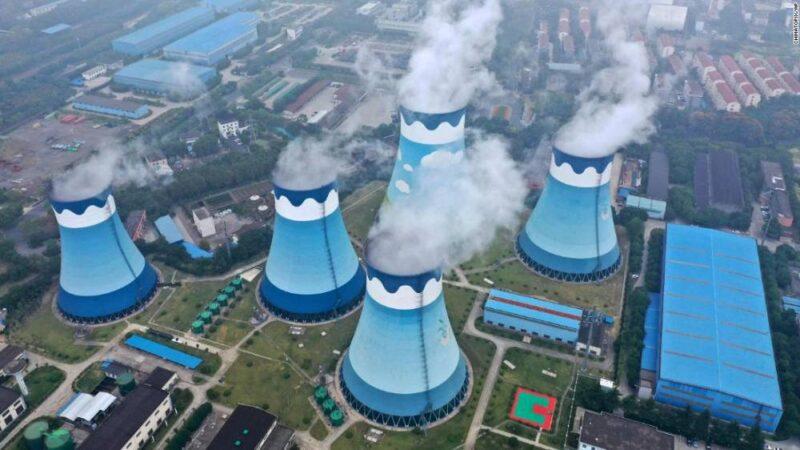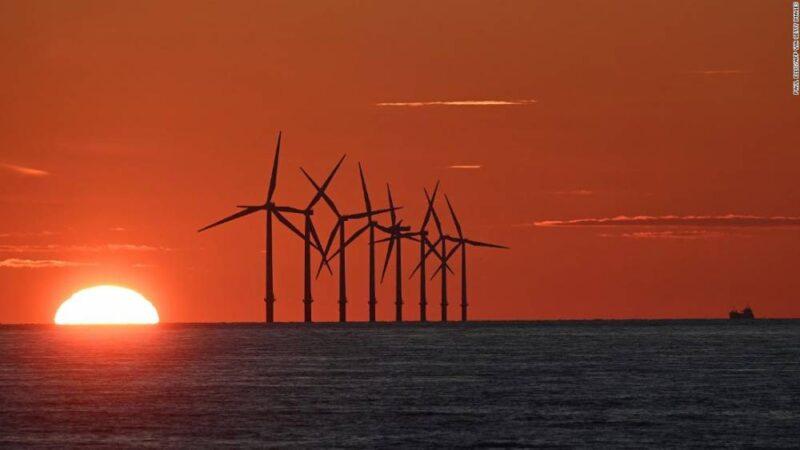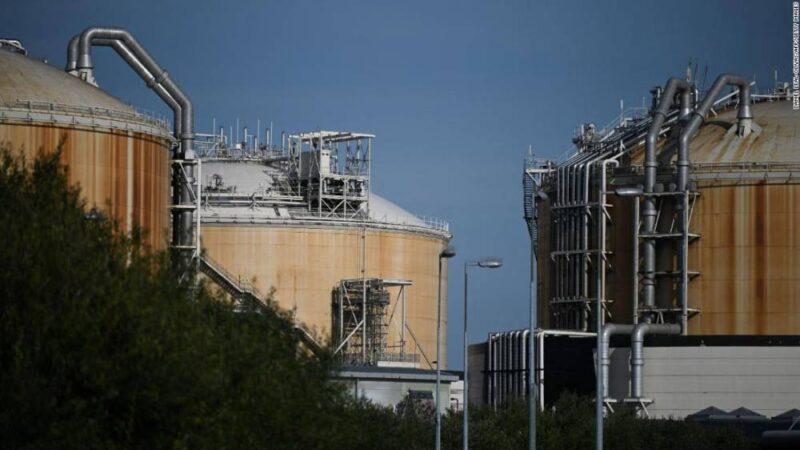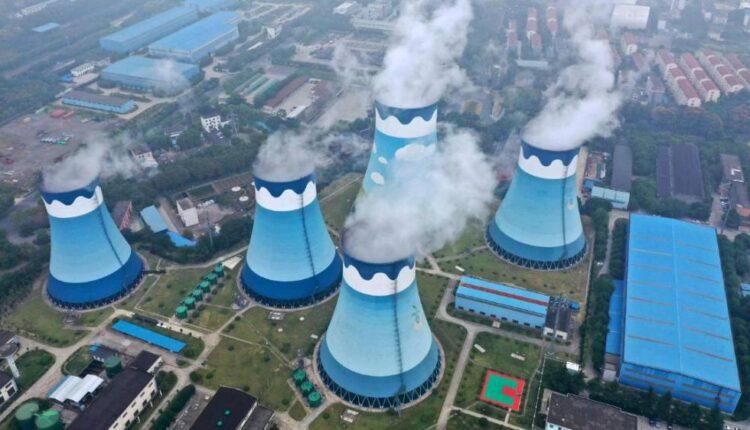London (CNN Business)Astronomical increases in natural gas prices. Skyrocketing coal costs. Predictions of $100 oil.
A global energy crunch caused by weather and a resurgence in demand is getting worse, stirring alarm ahead of the winter, when more energy is needed to light and heat homes. Governments around the world are trying to limit the impact on consumers, but acknowledge they may not be able to prevent bills spiking. Further complicating the picture is mounting pressure on governments to accelerate the transition to cleaner energy as world leaders prepare for a critical climate summit in November.
In China, rolling blackouts for residents have already begun, while in India power stations are scrambling for coal. Consumer advocates in Europe are calling for a ban on disconnections if customers can’t promptly settle what they owe.
“This price shock is an unexpected crisis at a critical juncture,” EU energy chief Kadri Simson said Wednesday, confirming the bloc will outline its longer-term policy response next week. “The immediate priority should be to mitigate social impacts and protect vulnerable households.”Read MoreIn Europe, natural gas is now trading at the equivalent of $230 per barrel, in oil terms — up more than 130% since the beginning of September and more than eight times higher than the same point last year, according to data from Independent Commodity Intelligence Services.In East Asia, the cost of natural gas is up 85% since the start of September, hitting roughly $204 per barrel in oil terms. Prices remain much lower in the United States, a net exporter of natural gas, but still have shot up to their highest levels in 13 years.”A lot of it is feeding off of fear about what the winter’s going to look like,” said Nikos Tsafos, an energy and geopolitics expert at the Center for Strategic and International Studies, a Washington-based think tank. He thinks that anxiety has caused the market to break away from the fundamentals of supply and demand.

Steam billows out of the cooling towers at a coal-fired power station in Nanjing, China.The frenzy to secure natural gas is also pushing up the price of coal and oil, which can be used as substitutes in some cases, but are even worse for the climate. India, which remains extremely dependent on coal, said this week that as many as 63 of its 135 coal-fired power plants have two days or less of supplies.The circumstances are causing central banks and investors to worry. Rising energy prices are contributing to inflation, which already was a major concern as the global economy tries to shake off the lingering effects of Covid-19. Dynamics over the winter could make matters worse.
No easy solution
The crisis is rooted in soaring demand for energy as the economic recovery from the pandemic takes hold, and a carefully calibrated system that’s easily disrupted by weather events or mechanical problems.An unusually long and cold winter earlier this year depleted stocks of natural gas in Europe. Soaring demand for energy has impeded the restocking process, which typically happens over the spring and summer.

Europe's gas crisis is also a renewables crisis, but there are ready solutions China’s growing appetite for liquified natural gas has meant LNG markets can’t fill the gap. A decline in Russian gas exports and unusually calm winds have exacerbated the problem.”The current surge in European energy power prices is truly unique,” energy analysts at the Société Générale bank told clients this week. “Never before have power prices risen so far, so fast. And we are only a few days into autumn — temperatures are still mild.”The dynamics are reverberating globally. In the United States, natural gas prices have risen 47% since the beginning of August. The scramble for coal is also triggering a spike in the price many European companies have to pay for carbon credits so they can burn fossil fuels. Additionally, the energy crunch is supporting oil prices, which hit seven-year highs in the United States this week. Bank of America recently predicted that a cold winter could push the price of Brent crude, the global benchmark, past $100 per barrel. Prices haven’t been that high since 2014.Jim Burkhard, who leads IHS Markit’s research on crude oil, energy and mobility, said there’s “no immediate relief in sight.””There’s no Saudi Arabia for gas,” he said, referring to a single supplier that can quickly ramp up natural gas production. “This looks like it’s going to endure for the winter in the Northern Hemisphere.”Russia could theoretically step up. Société Générale noted that faster approval by German authorities of the politically-sensitive Nord Stream 2 pipeline, which would carry gas directly from Russia to Europe, would ease significant stress.On Wednesday, Russian President Vladimir Putin suggested that Russia could increase its output, saying that state-owned gas giant Gazprom has never “refused to increase supplies to its consumers if they submit appropriate bids.”But Neil Chapman, senior vice president at ExxonMobil (XOM), emphasized the short-term constraints at an industry conference this week.”Of course there’s great concern,” Chapman said at the virtual Energy Intelligence Forum. “In our industry, because it’s capital intensive, you can’t just turn on the supply.”
Crisis with a cost
The best case scenario, according to Burkhard, is that a winter with average temperatures allows pressure to lift in the second quarter of 2022. But severe weather in the coming months would create huge strain — particularly in countries that rely heavily on natural gas for energy production, like Italy and the United Kingdom. Britain is in a particularly tough spot because it lacks storage capacity, and is dealing with the fallout from a broken power line with France.

Liquefied Natural Gas (LNG) storage tanks are seen in southeast England.”The UK is arguably at the highest risk of Europe’s major economies of a winter supply shortfall,” Henning Gloystein, director of the energy, climate and resource team at consultancy Eurasia Group, said in a note to clients this week. “Should this happen, the government would likely demand factories to reduce output and gas consumption in order to ensure household supply.”The massive jump in energy costs, which shows no signs of abating, is fanning inflation fears, which already had been forcing policymakers to carefully consider their next steps.Energy prices in developed countries rose 18% in August, the fastest pace since 2008, according to data released Tuesday by the Organization for Economic Cooperation and Development. And that was before the situation deteriorated significantly in recent weeks.Higher energy bills could crimp consumer spending on clothing or activities like dining out, hurting the comeback from the pandemic. If businesses are asked to curtail activity to conserve power, that could also hurt the economy.”There are concerns that rising gas prices will put Europe’s post-pandemic economic recovery at risk,” Gloystein said.There’s also anxiety that price volatility could feed public skepticism about funding for the energy transition, according to Gloystein, should consumers demand more investment in oil and gas to limit future fluctuations. Governments that have committed to reducing emissions are preemptively trying to send a firm message: This bolsters, not undermines, the case for investing in a broader mix of energy sources.
“It’s very clear that with energy in the long term, it is important to invest in renewables,” European Commission President Ursula von der Leyen said Wednesday. “That gives us stable prices and more independence, because 90% of the gas is imported to the European Union.”— James Frater, Laura He, Katharina Krebs and Diksha Madhok contributed reporting.
Source: edition.cnn.com

